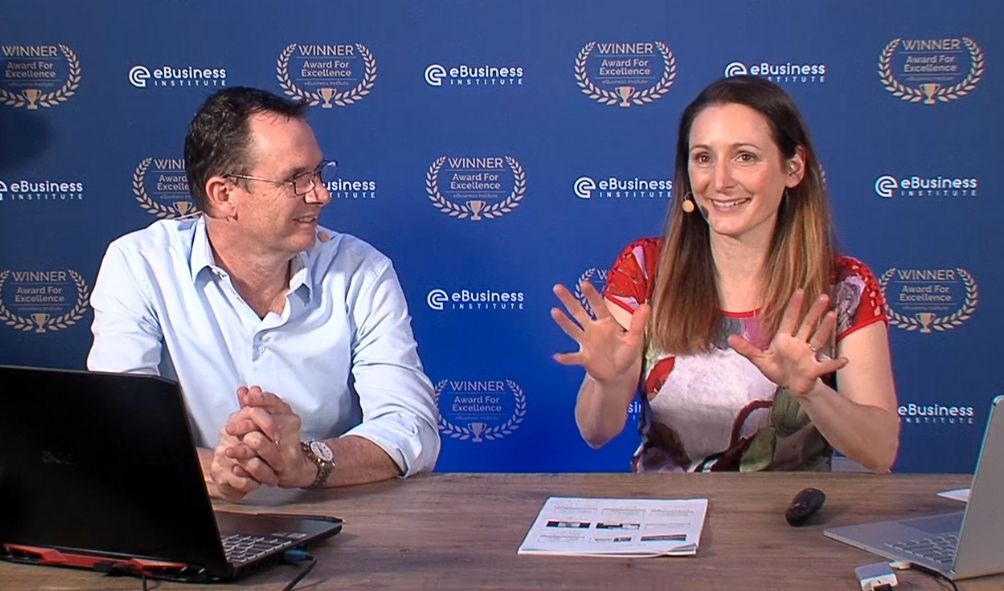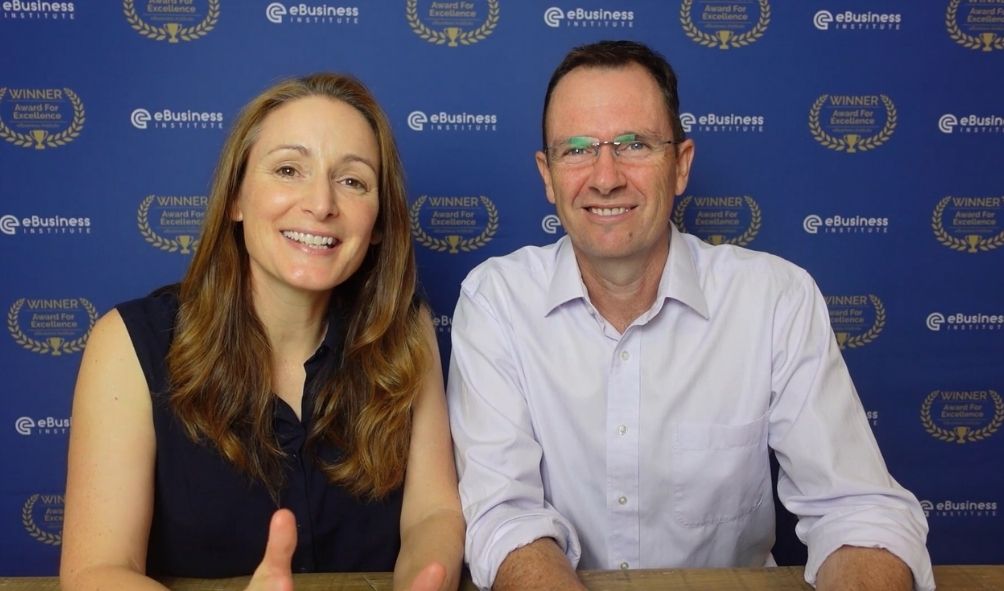Are you buying websites for passive income, but don’t know what to do next? This is a common question and is where money is made or lost when investing in digital assets.
The great thing about buying websites for passive income is you have the choice of what you do with it. It’s all about knowing the right type of websites to buy and understanding what’s involved to maintain them.
So today, we’re going to show you a simple 3-step blueprint of what to do with your newly purchased website that will help you to increase traffic and monthly cash flow. More importantly, we show you how to diversify your income so you can build a secure portfolio of online assets, just like our students have.
Watch the video and/or read the transcript below.
Matt Raad: Hi, everyone. Today what we want to talk about is when you buy a website for passive income, what do you actually do with them? And what’s the maintenance on them?
Liz Raad: Yes. So you bought this website asset. What’s the next step?
What to look for when Buying Websites for Passive Income
Buying Websites for Passive Income that Requires Low Maintenance
I actually want to start by taking a step back. Because before you even buy it is actually the cool part. This is a bit of a “choose your own adventure” because when you’re looking to buy a website (when you’re doing your due diligence), you should actually be looking at what is involved in the maintenance of that website.
And that’s a really smart question to ask your seller or the broker to say, “Okay, exactly what do you need to do to maintain this website? Or what have you done to grow this website?” That will give you a really good clue as to how much maintenance is going to be needed, or how much effort is going to be required to maintain or grow that website.
So that is the number one question to ask when you’re doing your due diligence and before you even buy the website. We always suggest you focus on the websites that require a lot less effort to keep them going.
Buying Websites for Passive Income that are Leveraged
Matt: And that brings us to number two, which is you need to buy a specific kind of website. What we’re talking about is buying passive websites, or websites that are as passive as possible.
The great thing about investing in digital assets is that you can jump online and buy websites from all different brokers who are out there now. There’s a whole range of different websites, and you can literally buy yourself a very high paying job.
In other words, there are some websites out there that are very active. There’s a lot of work needed to run those websites. You’ve got to work on them every day etc. Now you can still make a lot of money, and you can still work from home with them. They’re very leveraged, but they’re certainly not what we’re talking about today. They’re not as passive.
So, it’s important that you recognize the type of website that you choose to buy.
Liz: As an example, that’s why we don’t tend to buy e-commerce websites, because they require so much more maintenance, stock management, and all the investment involved in inventory and refunds etc. So, in other videos and in our masterclass, you can learn exactly what websites we target.

3 Things to Do Once You’ve Purchased A Passive Website
So, what do we do with the time-leveraged websites that we purchase?
The websites that we target tend to be content websites that are monetized with advertising or affiliate and referral products. What that means is we’ve got three main things that we need to do to a website to grow it and maintain it.
Step 1: Visual Tidy Up & Organize the Information
Liz: The first thing we want to do when we first take control of the website, is a visual tidy up. It’s exactly the same as property. Our strategy online is very similar to if you’re buying a house like an investment property. The first thing we want to do is give it a coat of paint, tidy up the kitchen, the bathroom, the walls etc.
Matt: Give the website a nice quick makeover.
Liz: Yes. So we do a visual tidy up. That might include reorganizing the information. A lot of websites that we buy are a bit of a mess. It’s not very easy to find the information that you’re often looking for.
You may want to create a new homepage with a nice new logo. You can get a logo done for $5 on Fiverr.
Matt: I’m constantly surprised when I’m looking at our students’ websites. I say, “Where’d you get this logo done?” And they’re only spending $5 on Fiverr. I remember 10 years ago, we used to spend hundreds of dollars! $600, sometimes even $800 for really nice logos. But today, you only have to spend $5 on Fiverr, or people build a logo themselves on Canva these days.
Organizing Information on a Website makes it easy for Google and for your Visitors to know what your website’s about
Liz: The other thing we want to do is organize the information. You’ll learn in our processes that we actually have a very methodical process about how you organize the information on a website.
This makes it really easy for visitors (and also for Google) to realize what your website’s about and easily find what they’re looking for. And that’s really important for what’s called SEO, which is search engine optimization. SEO is helping Google to identify you as a really good website to put in its search results when someone looks up that particular topic.
Matt: So just like on those house renovating shows, we do a very similar thing with websites. And the good news is once you learn how to do it, it’s pretty straightforward. As you’re doing your due diligence and buying these websites, it becomes obvious what you need to do in that first initial makeover.
Step 2: Increase the Website’s Monetization
Matt: Step two is fixing up the monetization. So whilst we’re doing this quick website makeover, one of the other things we’re doing at that same time is looking at how well it’s been monetized. Is there a better way to monetize it? That’s the number one question.
Liz: Can we make money out of this website?
Matt: And can we make MORE money?
Liz: The main thing that we want to ask ourselves is: Is the monetization that’s currently on the website effective enough? Or could we actually add more?
We might find if it’s a website that’s currently making money out of advertising (like Google AdSense Program), we might look at that and say, “Okay, we could actually also add some referral products. Maybe something referring through to the Amazon referral partner program, or some other affiliate programs.” We could actually add some products on there as well as the existing advertising revenue.
The other option is we could add a downloadable eBook, an information product, or membership to the website. And again, that could be our own product, or it could be an affiliate product.
“The more forms of revenue streams that you can add to a website, the more money it makes. But also, the more valuable it becomes because we’re diversifying that income.” – Liz Raad, eBusiness Institute
Diversification is key for our income. It’s dangerous enough having only one form of income from your job. This is why a lot of our students do this whole process. They want to get another stream of income besides their job. Once we get into websites as well (or any investment), we also want to diversify. So diversifying the website monetization is a great way to do that.
Also, it can really surprise you how you can increase the website’s existing income. An example of this is one of our graduate students, Lisa, who’s done some awesome stuff with her website that she bought for $2,000. It has just recently hit $5,000 income per month. And part of that is because Lisa negotiated better affiliate payments and products. She did that really well.
Step 3: Increase the Website’s Traffic using Valuable Content
Matt: Step number three is traffic, and this is one of our favorite strategies that we like to do with a website. Traffic is the number of visitors that come to your website every month.
Liz: It’s similar to people walking past the shop front. If you have a shopfront in a main street somewhere, you’d think about traffic being the cars and the people walking past the shop. In the website world, traffic is the people coming to see your website and you want as many of them as possible.
Matt: That’s right. So, we’re also planning this stage out when we’re doing the initial makeover and looking at the monetization in the first two steps. But this third step is an ongoing step and answers the question of “what does it take to run these websites?”. This step is the maintenance and these days it’s about posting ongoing content.
Liz: Because we’re working with content-based websites, the whole focus of our websites is to help people. We want to help answer their questions and solve their problems.
To do this, we search for topics and for questions that people ask in this niche, and we answer it for them. We make their life easy. We want to write content them helps them research something or get all the information in one place.
And so, our whole purpose is to help people to make life easier, to make buying decisions easier, or to help them get answers for the questions that they have. That’s a pretty cool way to do it. If you go in with the attitude that I’m here to help people, then that’s a perfect renovation.
As an ongoing step, we’re finding the questions that we need to answer in this topic.
Matt: This is something that was taught to me many years ago when we first started making money online – it’s all about eyeballs.
“The more eyeballs we get to our website, the more money you will make.” – Matt Raad, eBusiness Institute.
It really stuck in my mind at the time. And we’ve certainly found that to be the case. If we can get more traffic to the website, that’s a valuable asset for the long term. This is our investment into our future with this asset. The more that we can increase traffic, the more valuable this asset becomes, and all this snowballs over time.

Who Do You Need to Maintain Your Websites?
Important Person 1: Content Writer
Matt: Again, this step is using search engine optimization (SEO). But because of the type of websites that we buy, we can just break it down to one big, simple concept, which is adding more content.
Now I know the very first thing that you’re going to be thinking (which is exactly what I thought when I started learning this as well) is, “I can’t write content.”
I can tell you, I’m not that great a writer. I can read okay, but I didn’t do that well at English in school, did I Liz? I did well in maths and science (that’s what I ended up doing in university), but English was not my strong point. I’m not a good writer.

In this day and age, of course, we outsource that. I don’t write any of my own articles. I get them written by people from platforms such as Upwork, Fiverr, or iWriter, etc. There’s lots of people who are working at home and happy to write articles for you on any topic that you can imagine.
Liz: And now with the changing world, we’ve got a lot of incredible writers out there (including journalists) who want to work from home and are great content providers. This is great, because we need that content.
Important Person 2: Technical Support
Liz: And then the other person that you need for this process is a technical person to help you if there’s any technical issues with your website. This is something that I recommend all our students get quite early on. If you’re not a technical person, you can obviously learn, and that’s what all our students do. We do have some students who learn how to technically work and manage a website.

But as your portfolio grows, and you get some leverage in there, the best thing you can do now is hire someone. A technical person can just fix any of the problems, and fix any of the websites that you break…like Matt does!
Matt: I may have been known to occasionally (…very early in the morning when Liz isn’t around…) go in to update a website, and actually crash it. I think, “Uh ok, now I’m going to be in trouble! I won’t tell Liz; I’ll just send a quick email to our tech support”.
You don’t need to hire full-time staff to maintain your websites
Matt: The other thing we should mention, too, because I know a lot of people have fears around this. We’re talking about hiring all these people from around the world and they’re virtual. These aren’t full-time people.
They can just be ad hoc. You don’t need to employ someone for 40 hours a week like we do here in Australia. You can use a platform such as Upwork to hire people on a project basis. You could hire someone just for two hours a week and they can come in and do a little bit of work for you.
This is exactly what a lot of outsourcers do, particularly writers. Writers will write articles for lots of people. So it’s a lot easier than what it used to be.
Liz: I’d suggest that’s actually one of the skills that you need to learn going forward to get some leverage in your life. And we’ve talked about in other videos about how do you disconnect that time for money problem that most people have? And one of those ways is you learn how to get other people to do stuff for you. And that’s where you get a huge amount of leverage for your life. So definitely a skill worth learning regardless.
So, that’s our three things that we do to a website.
Examples of Students who are Buying Websites for Passive Income
Now, we’ve got a few students who’ve done this beautifully and they’re really good examples of how this works in the real world, because there’s a couple of ways that you can do this.
Matt: Yes. If you’re like Liz and I (and a number of our students out there), we like to just work hard, binge, and then stop.
People often say, “Well, how often do you have to do this? What is ongoing maintenance?” Well, for some of our sites (because of the style of them and the fact that they’re passive), we’d literally only have to work on them once a year. And then you do some very basic technical stuff throughout the year.
Nathan & Alexa worked on their site once a year before selling it for over $16,000 profit
A great example of that is Nathan and Alexa. They did a renovation on a starter site that they were learning off. And, you’ll see in the interview, the website’s called Curd Nerd. They only worked on that site once a year. They bought the website for $900 and they sold it for $17,000 a few years later. But the important thing is that once a year they’d do their renovation on it, and that was it.
Lisa worked on her site once a month to increase her income from $2,000 to $5,000 per month
On the other hand, another student (who Liz was talking about earlier), Lisa is posting regular content. She posts an article from her writers once a week or sometimes once a month. Lisa’s strategy is ongoing but is only part-time. She’s only working an hour or so a week, and Lisa’s site now makes over $5,000 a month.
Where can I learn more about Buying Websites for Passive Income?
Liz: Perfect. So there you go. That’s what you do. When you buy a website for passive income, that’s the sort of things that we do to renovate them and then maintain them and grow them. So I hope you enjoyed that.
Make sure you watch those interviews in our Matt and Liz Raad YouTube Channel because it’s awesome to see this in practice in the real world.
You can also register for our free masterclass on how to Buy & Renovate Websites for Income.
So we’ll look forward to seeing you on the next video.




